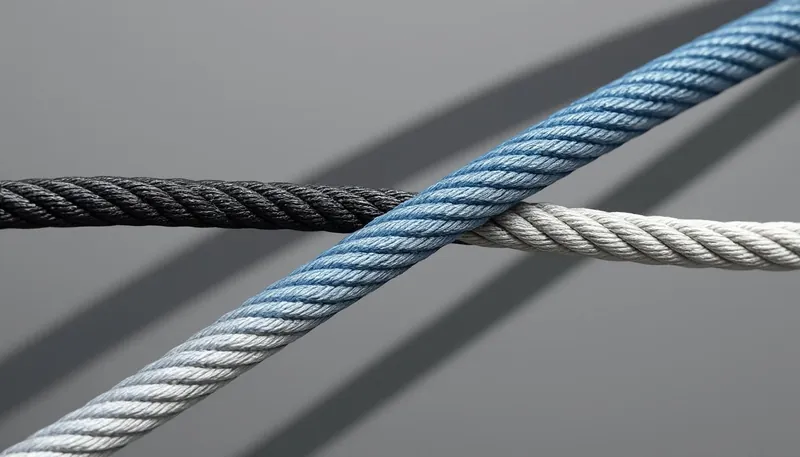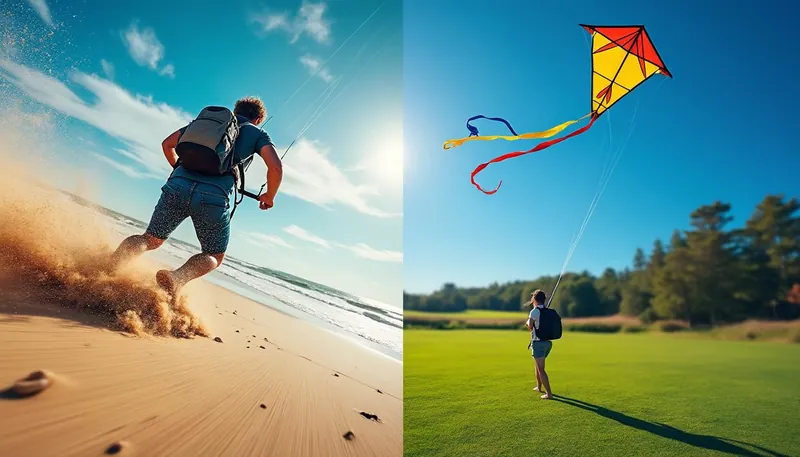The evolution of kites has significantly transformed the way we interact with the wind. Whether you’re an enthusiastic beginner dabbling in the art of kite flying or an experienced kiteboarder, grasping the fundamental differences between traction kite lines and regular kite lines is essential.
Traction kites, designed for power, performance, and control, offer a unique experience compared to traditional kites. The differences between the two types of lines can be vast and affect how each kite operates. With this understanding, you’ll be well-equipped to enhance your kite flying with safety and performance in mind.
Understanding the Fundamentals of Kite Lines
Kite lines are important to the overall performance of any kite. They carry the tension created by the wind and connect the kite to the user. The main types of kite lines include traction and regular lines. So, what sets them apart?
Types of Kite Lines
Traction kite lines can be divided into several categories based on their specific functions:
- Front Lines: These lines control the kite’s position in the air by keeping it aloft.
- Back Lines: Also known as steering lines, these help to control the kite’s direction and allow for adjustments during flight.
- Bridle Lines: These lines distribute the load evenly across the kite and help to maintain its shape.
- Leaders/Connectors: They connect the kite itself to the flying lines and are crucial for alignment.
In contrast, regular kite lines may include fewer components, typically using simpler connections and structures. This makes them less complex but can also limit their performance in demanding conditions.
Materials and Durability
One of the key differences lies in the materials used to construct traction kite lines. Manufacturers develop these lines using high-strength materials designed to withstand the substantial forces exerted by traction kites. Notable brands like Ozone, Naish, and Slingshot focus on creating robust and durable lines that cater to the high-performance demands of traction kiting.
Regular kite lines, generally aimed at casual fliers, may be made from lower-strength materials. While these can be adequate for leisurely flying, they might not endure the same levels of stress or provide the same degree of control experienced with traction kites.
Length and Tension: Impact on Performance
The length of kite lines significantly influences how a kite behaves in the air. Traction kite lines are usually longer than traditional lines. The extended length allows for increased power and lift, enabling skilled pilots to perform advanced maneuvers.
However, this added power also requires improved control techniques. The transition from regular kite lines to traction kite lines often means adapting to the extra tension created during flight. Riders need to be aware of this change to manage their kiting experience.
Line Tension and Control
High-tension lines result in a more responsive kite, allowing rapid changes in direction and speed. Traction kite lines, more so than regular lines, can handle various wind conditions, from mild breezes to more intense gusts. The advantages here include:
- Improved responsiveness to the pilot’s inputs.
- Better stability in turbulent air.
- Increased ability to perform advanced tricks.
Safety Considerations: Why Line Strength Matters
When kite flying, safety should always remain a top priority, and this extends to understanding the limitations of your kite lines. Traction kites can generate incredible forces in high wind, necessitating the use of strong, reliable lines.
The differences in line strength become apparent when evaluating safety margins. Quality lines from renowned brands like Cabrinha, Liquid Force, and F-One are designed with safety as a primary concern for both the rider and those nearby.
Consequences of Weak Lines
For a novice pilot, using weaker regular kite lines might not pose a significant risk initially. However, attempting advanced tricks or flying in stronger winds with fragiled lines can lead to dangerous situations. Consider these potential consequences:
- Increased likelihood of line breakage, leading to a loss of control.
- Potential injury from sudden line snapping.
- Hazardous situations for bystanders, as uncontrolled kites can cause accidents.
Technological Advancements in Kite Line Design
As the sport continues to evolve, kite line design has also improved. Advances in technology have led to the introduction of new materials and production techniques that enhance performance. Brands like Duotone and North Kiteboarding are examples of companies focusing on cutting-edge developments in traction kite lines.
Recent Innovations
Innovative solutions cater to the demands of modern traction kiting, introducing features such as:
- Color-coded lines: Enhances visibility and helps maintain organization for pilots.
- Dyneema or Spectra lines: These materials offer unmatched strength-to-weight ratios, improving line durability.
- Adjustable lengths: Some systems now allow for easy modification of line lengths to suit riding style and conditions.
These advancements ensure that traction kites perform better than ever before, taking the sport to new heights.

Price vs. Performance: Making the Right Choice
While quality matters, it’s essential to consider the investment associated with purchasing kite lines. Traction kite lines often carry a higher price tag compared to regular lines. However, as you may have gleaned, investing in high-quality traction lines means enhanced performance and safety.
Understanding the Cost Breakdown
When weighing your options, think about the following factors that contribute to the price of kite lines:
| Feature | Traction Kite Lines | Regular Kite Lines |
|---|---|---|
| Material Quality | High-strength, durable materials | Standard materials, less durable |
| Length Options | Longer options for power | Typically shorter lines |
| Performance Range | Performance in varied conditions | Limited performance |
| Retail Price Range | Generally higher | More affordable |
Making an Informed Decision
Ultimately, your decision should be informed by how you wish to engage with the sport itself. Are you looking for casual fun or aiming for performance-oriented adventures? Doing thorough research on products from leading brands such as Core Kiteboarding or Airush can guide you in making the best purchasing choice for your needs.
What are the primary differences between traction and regular kite lines?
Traction kite lines are made from stronger materials, are longer for increased power, and designed for performance. Regular kite lines are simpler, often made from standard materials, and typically shorter.
Can I use regular kite lines for traction kites?
Using regular kite lines with traction kites is not recommended as they may not handle the higher stress and tension created during flight, leading to safety issues.
What brands offer quality traction kite lines?
Leading brands include Ozone, Naish, Slingshot, Cabrinha, Liquid Force, F-One, Duotone, North Kiteboarding, Core Kiteboarding, and Airush.
What impact does line length have on performance?
Longer lines can increase kite power and lift, but also require greater control skills. Shorter lines generally provide a simpler flying experience.
Why should safety considerations matter in choosing kite lines?
Strong kite lines from reputable brands enhance safety by reducing breakages and maintaining control during challenging flying conditions.


